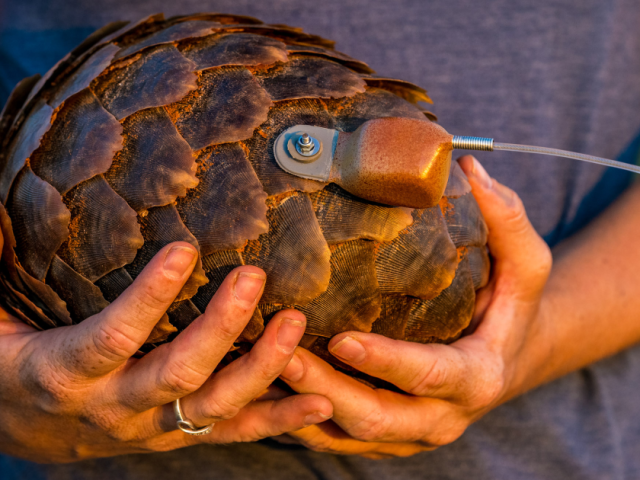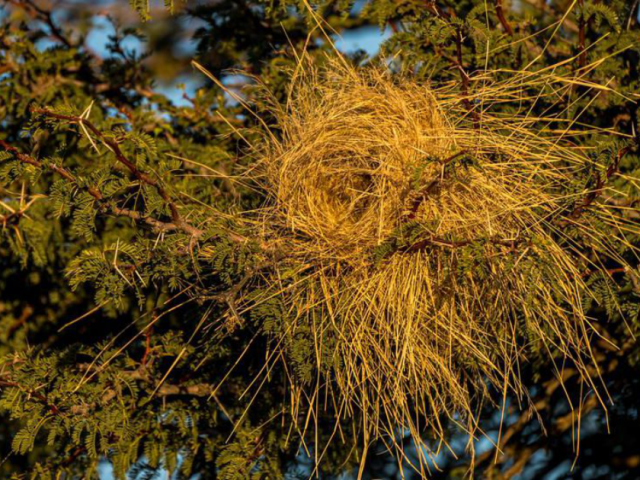Fierce fires can help save the veld from bush encroachment and extinction, say UCT Prof
His name’s Bond, William Bond, and he says it’s time to put fire to the veld. To save it.
Bush encroachment, supercharged by soaring CO2 levels associated with global warming, threatens to smother grasslands. In this global face-off between grasslands on the one hand, and bushes and trees on the other, the mantra that forests are the frontline against climate change has tilted the balance against grasslands. Added to that, the chariness in using fire to maintain them, together with dwindling numbers and extinctions of large herbivores who have historically grazed them into shape, makes the future of these valuable ecosystems even more precarious.
Bond is Emeritus Professor in the Department of Biological Sciences at the University of Cape Town. His research interest has been in the ecology, biogeography and evolution of open (non-forested) ecosystems, which encompass fynbos shrublands on the tip of Africa, and grassy ecosystems throughout the rest of the continent. He has argued that grasslands did not emerge because humans chopped down the primeval forests, an understanding that in part underpins the push to afforest tracts of land for carbon capture even where trees have never been part of the landscape. Instead, argues Bond, grasslands came about through a complex interaction between climate, animals and fire. And he stresses that “grasslands love fire”.

This will be the theme of a presentation he will deliver at the annual Oppenheimer Research Conference in October titled “The future of the grassy biomes”. That future will depend on disruptions caused by a variety of factors, including global warming and how higher CO2 levels affect plant growth rates.
Bond says that “for the last nearly million years we have direct evidence from air caught in Antarctic ice that atmospheric CO2 varied from about 180 ppm during cold (glacial) periods to 280 ppm during warmer periods (interglacials). This year, it rose to 430 ppm. And continuing. With the rate of increase increasing even as nations squabble over what to do.
“Latest reconstructions using marine proxies indicate that CO2 has not been so high since about three million years ago, before the Pleistocene, the Ice Age, began. CO2 is the substrate of life, and we are entering a world with CO2 levels exceeding that which drove much of the evolution of the grassy biomes of Africa and their fauna.”
Bond says “the largest area of grassy vegetation occurs in climates that also support forests. Current and future trajectories suggest a global shift from grassy to woody vegetation in these regions. In extreme climates, too dry or too cold for tree growth, shrublands are shifting to grasslands, driven by native and non-native grasses. These introduce novel fire regimes which rapidly transform fire-naive arid ecosystems to near monospecific grasslands. Invasive grasses are also driving change at the other climate extreme in humid forests. Here deforestation and road-building allow grasses to colonise fire-naive forests.”

His presentation will consider what drives these vegetation changes, noting that “ultimately the biggest uncertainty will be human ability to manage our very uncertain future”.
That ability may be a question of faith. “Where we’re heading is catastrophic,” says Bond. “We have been ridiculously stupid, putting things aside that we should have done. We know that shutting down fossil fuel use would really make the difference, but we’ve left it far too late. We have a very, very, very serious problem.
“But I don’t want to dwell on that,” he says, shifting the conversation firmly back to his overriding interest.
“Grassy ecosystems are strange and intriguing, and they don’t fit the basic framework for how people thought about climate and how it influences things. Because grassy ecosystems don’t have a clear climate niche. They occur everywhere, in the most extreme cold and extreme dry, in very wet tropics, in boreal regions. The only distinguishing feature really is that they have grass, and if there are trees, they do not form a forest, with the exception of bamboo.”
Africa, in particular, is a continent dominated by grassy ecosystems. “And South Africa is about the least forested place you can see on the planet. People say well, it’s all because of people chopping trees down. This was a worldwide interpretation, and it was also true in South Africa, that human activities, specifically Iron Age farming, supposedly led to extensive deforestation.” However, says Bond, this explanation is increasingly being challenged.

He says it has further been argued that South Africa’s famous fynbos ecosystems are naturally treeless due to poor soils. However, forests can and do grow in the same soils as fynbos, which suggests that the absence of trees is not merely due to soil quality. This points to a more complex and globally significant question about the true nature of non-forested areas and their historical interpretation as deforested lands.
‘Grassy ecosystems are historically and ecologically interesting,” says Bond. “Ours evolved relatively recently, within the last 7-8 million years, with some tropical grasslands emerging as recently as 2-3 million years ago. They just took over the world, and they did it with the agency of fire until very recently. Some people still hang on to their old beliefs, that fire is a tool of humans, and is intrinsically bad, not natural, whatever that means. Well, critical discoveries since the new millennium are that fire has been burning vegetation for over 400 million years. Long, long, long before there was any scent of mammals, let alone humans, the world has been burning. It was a terrible blunder to discard fire as being a major biogeographic process.”
In addition to fire, large mammals have also shaped grasslands. The extinction of large herbivores, both historically and in modern times, has significant implications for grassy ecosystems. Bond believes dinosaurs moulded landscapes, “but there’s been no decent study of how important dinosaurs were in getting rid of forests, and creating open, short vegetation”
One of the major threats to grassy ecosystems is the rising level of atmospheric CO2. This increase promotes tree growth and alters the competitive balance between grasses and trees. Grasses that have adapted to low CO2 levels may struggle to compete under higher CO2 conditions, potentially leading to a shift from grasslands to wooded vegetation. This change is exacerbated by human activities such as fire suppression and the reduction of large herbivore populations.

It also has profound implications for farming practices, says Bond. “Whatever your grandfather did, you can’t get away with now. It won’t work. If you want to be a cattle farmer, your farm will come full of trees, and you won’t be able to cope. This is what we see, all over the place. And if you talk to farmers in the Eastern Cape, it’s just a desperate, desperate attempt to hold the trees back, and they never had to do that before. And the rate at which it’s changing is remarkable. Since 1990s, we’ve seen trees pouring into the Eastern Cape, and the interpretation of that encroachment at the time was that it was due to mismanagement,” before the role of CO2 levels became apparent.
Bond says strategies of “how you graze, whether you use fire appropriately, whether you have a mixed herd, of cattle to do the grazing and goats the browsing, all still apply. But even if you get it all right, you’re going to get swamped by trees. The trees will just keep pouring in. We see it with our conservation areas where they have a good mix of animals, they use fires, and it just doesn’t matter. They’re just crammed up with plants, with trees, and shrubs. We’re seeing this pattern of woody plants going crazy all over the place, all around the world”.
As traditional management practices become less effective, Bond suggests high-intensity fires as a possible solution to maintain open grasslands. “You wait for high temperatures, low humidity, and particularly high wind speed. The dangers are obvious, but if you burn in these extreme conditions, it’s possible to burn back this dense woody vegetation. And that’ll give you at least some respite.
“We’ve done it at Kruger,” he says, and also cites Gabon and the US as countries that have started adopting this strategy. “In Gabon, they’re doing their very best to stop the forest expanding into the grassland, because the darn tropical forest keeps moving in, moving in all the time. And they don’t want to lose the grassy systems because they are important in the lives of the key animals there, including the forest elephant, which although it’s a forest elephant, it uses the grasslands too, as things often do. And they’re fighting really hard to try and hold that forest back.”

Grassy ecosystems are essential for various reasons, including water conservation. In South Africa, grassy catchments are crucial for limiting soil erosion and providing sustained water yield, which is vital for a water-scarce country. “The biota of the grasslands is extraordinarily rich. Our grassy ecosystems in South Africa are packed with plants and animals that grow nowhere else”.
Lest it be thought Bond is arborophobic, he says he would like to see a “mosaic of forest and grassland, which is very good in terms of conservation”.
Nevertheless, he advocates for an African perspective on land management that acknowledges the intrinsic role of fire and large herbivores in grassland systems, in the face of global pressures to prioritise carbon storage through widespread tree planting, which Bond calls “a sop to fossil fuel companies”. He says that “cattle and goats as surrogates for wildlife are very acceptable because the vegetation is designed for them. The notion of environmentally degraded systems has been with us for nearly 200 years because of mistaken ideas, and we must change all of that and accept and fight for an African perspective on how to manage and how to look after these grassy systems.”
Bond fears that grasslands may disappear as quickly as they emerged, cosmically speaking. “We don’t know the future,” he says, “but as long as we can, let’s fight for what we have got, or we’re going to lose it”.

Professor William Bond will deliver his presentation, “The future of grassy biomes”, at the annual Oppenheimer Research Conference which takes place in Midrand, Gauteng from the 9th-11th October.
Author
- Tracking the Shangani Wanderer - June 18, 2025
- Rescue, rehabilitate, release: tracking the comeback of South Africa’s pangolins - June 18, 2025
- Fewer weavers, fewer homes: why nest builders matter in the Kalahari - June 17, 2025
Additional News
Pangolins are elusive and heavily trafficked. At Tswalu, researchers are working to uncover their secrets and aid conservation.
Declining Sparrow-Weavers may threaten other birds that rely on their old nests for shelter.





